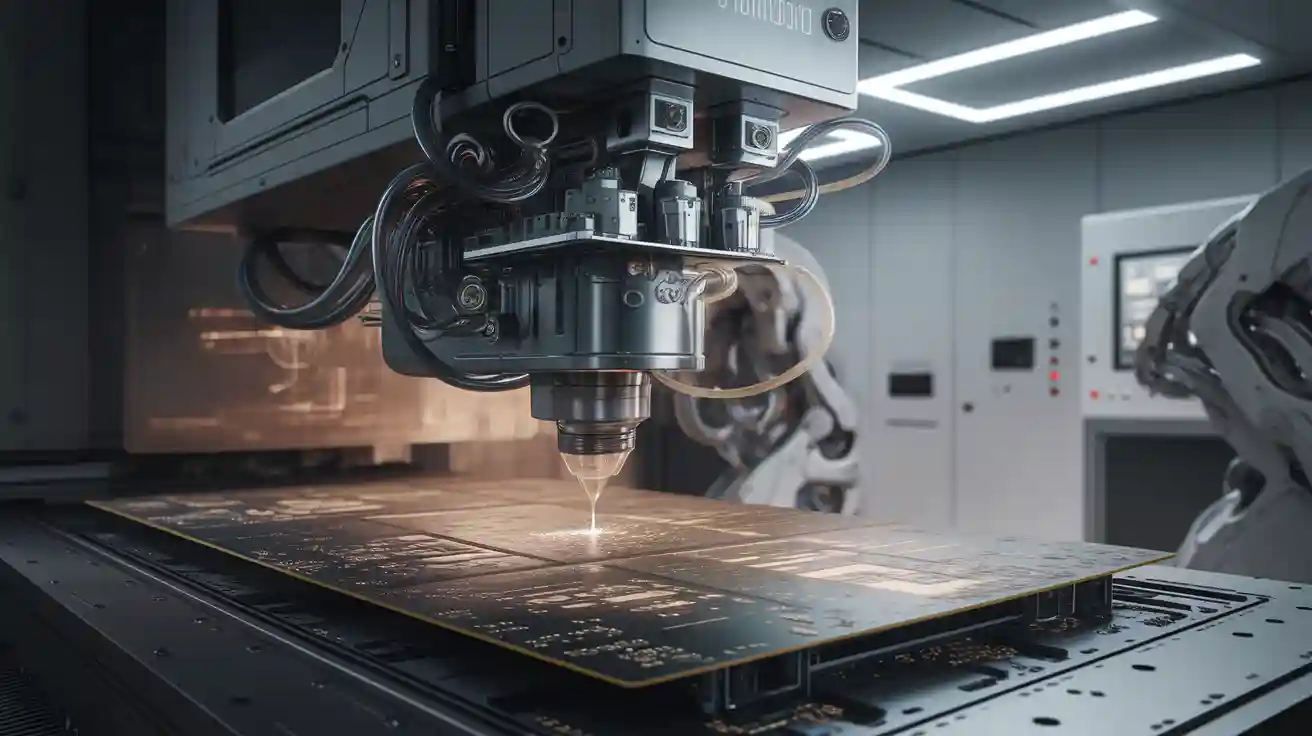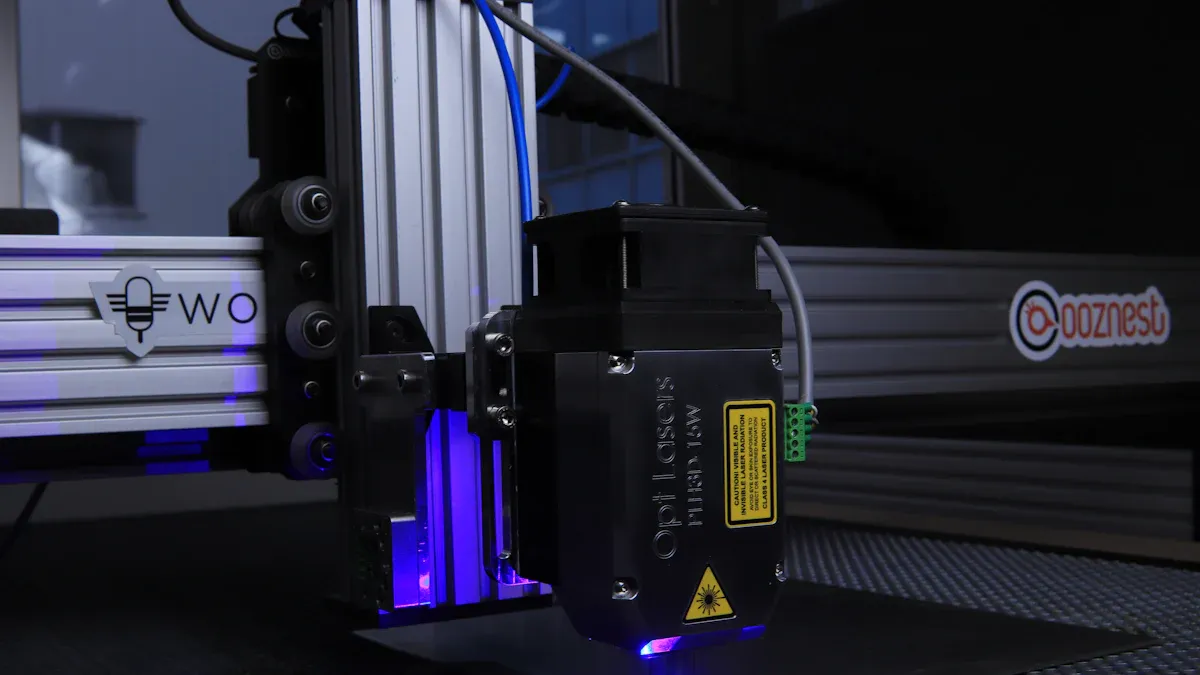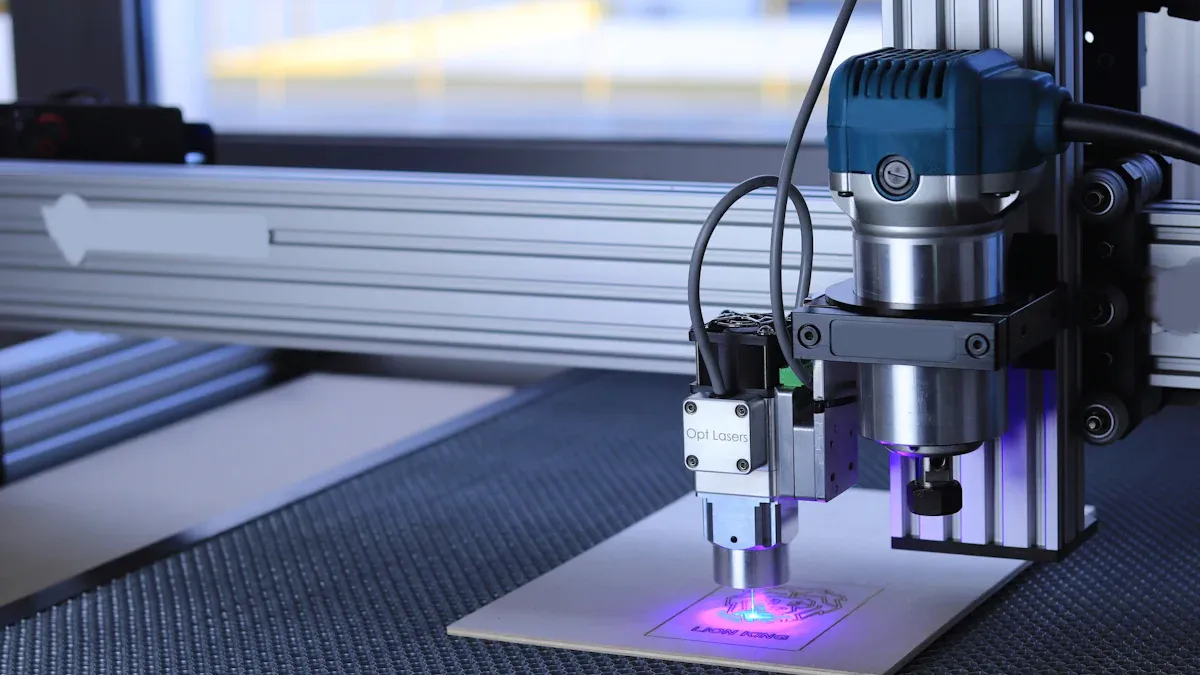The role of Vacuum Two-Fluid Etching machines in high-precision PCB production

High-precision PCB making needs advanced methods for complex designs. Vacuum Two-Fluid Etching machines are key to this process. These machines use special technology to make detailed circuit patterns. They remove materials carefully, improving the quality of PCBs in electronics. They also save time and reduce waste, making them very important for PCB production today.
Key Takeaways
Vacuum Two-Fluid Etching machines help make PCBs with exact patterns, important for today’s electronics.
This method cuts down waste and works faster, making it green and useful for factories.
LT CIRCUIT uses these machines to make top-quality, custom PCBs for industries like space and telecom.
The process works well for tricky PCB designs, giving both accuracy and flexibility.
Fields like healthcare and telecom gain a lot from this, as it provides strong and detailed circuit boards.
Understanding Vacuum Two-Fluid Etching Technology

What is Vacuum Two-Fluid Etching?
Vacuum Two-Fluid Etching is a modern way to make PCBs. It uses a vacuum and two-fluid etching for precision. A mix of gas and liquid removes extra material from the PCB. This process creates detailed patterns and ensures accurate results.
This method works well for today’s PCBs with tiny parts and complex designs. Older methods may not handle such details as well. But Vacuum Two-Fluid Etching gives better precision. It also reduces mistakes, making it a top choice for quality PCB production.
How Vacuum Two-Fluid Etching machines work
Vacuum Two-Fluid Etching machines follow a step-by-step process. First, the PCB goes into a sealed chamber. The vacuum inside removes air and keeps the surface clean. It also helps the fluids spread evenly across the PCB.
Then, the machine sprays gas and liquid onto the PCB. The gas spreads the liquid, and the liquid removes unwanted layers. This makes the process both accurate and complete.
The machine lets users adjust settings like pressure and temperature. These controls help it work with simple or complex PCB designs. This flexibility makes it useful for many types of circuits.
Finally, the machine cleans off leftover fluids from the PCB. This step leaves the board clean and ready for the next steps. The process saves materials and is eco-friendly, which helps reduce waste.
Tip: These machines are great for industries like aerospace and telecom. They are perfect for making detailed designs in modern electronics.
The Role of LT CIRCUIT in High-Precision PCB Production
LT CIRCUIT's expertise in PCB manufacturing
LT CIRCUIT is well-known for making great PCBs. The company creates advanced PCBs for modern technology needs. It makes multilayer PCBs, HDI boards, and other tricky designs. These products help industries like telecom, aerospace, and electronics.
The company focuses on being precise and creative. It uses top materials and smart methods to meet high standards. LT CIRCUIT also lets clients customize PCBs for their needs. This makes it a trusted choice for businesses needing strong and reliable PCBs.
Note: LT CIRCUIT's quality ensures its PCBs work well in tough jobs.
Integration of Vacuum Two-Fluid Etching in LT CIRCUIT's processes
LT CIRCUIT uses Vacuum Two-Fluid Etching to improve its work. This method helps make detailed circuit patterns with great accuracy. The mix of gas and liquid removes extra material cleanly. It keeps the edges neat and precise.
This technology has made LT CIRCUIT's PCBs even better. It helps create complex designs with fewer mistakes. The process also cuts down on waste, which supports the company’s eco-friendly goals.
By using Vacuum Two-Fluid Etching, LT CIRCUIT stays ahead in PCB making. This helps meet the need for precise PCBs in advanced electronics.
Tip: Companies needing good PCBs can trust LT CIRCUIT's skills and ideas.
Advantages of Vacuum Two-Fluid Etching in PCB Manufacturing

Better precision and accuracy
Vacuum Two-Fluid Etching gives very precise results in making PCBs. It helps create tiny circuit patterns with great accuracy. The mix of gas and liquid removes material evenly. This avoids rough edges or mistakes during the process. Such precision is needed for modern PCBs with detailed designs and small parts.
The vacuum setup is important for keeping things accurate. It removes air, stopping dirt from ruining the process. This also helps the fluids spread evenly on the PCB. The result is clean and sharp patterns, which are key for advanced electronics.
Note: Better precision means fewer mistakes, saving time and materials.
Faster work and less waste
Vacuum Two-Fluid Etching makes PCB production quicker and less wasteful. It only removes the material that is not needed. This saves resources and lowers waste, helping the environment.
The vacuum system also makes the process more efficient. It spreads the etching fluids evenly, speeding up the work. This allows manufacturers to make high-quality PCBs faster. It meets the demand for modern electronic devices.
Using less material also supports eco-friendly goals in manufacturing. Companies using this method can meet their needs while being kind to the planet.
Works well with complex PCB designs
Vacuum Two-Fluid Etching works great for today’s tricky PCB designs. As devices get smaller and stronger, PCBs need to handle complex layouts. This method is perfect for such challenges, making it ideal for advanced PCBs.
The process is flexible and works with many materials and designs. Whether it’s a multilayer PCB or an HDI board, it gives reliable results. Its ability to adjust to different needs makes it useful in electronics.
Tip: This method is great for industries like telecom and aerospace. These fields need precise and dependable PCBs.
Applications and Industry Impact
Industries benefiting from Vacuum Two-Fluid Etching
Vacuum Two-Fluid Etching is important for industries needing precise PCBs. The aerospace industry uses it for making detailed circuit boards. These boards are used in planes and spacecraft for navigation and communication. This method ensures the accuracy needed for such critical tasks.
The telecom industry also depends on this technology. Devices like smartphones and network tools need small, powerful PCBs. Vacuum Two-Fluid Etching helps make boards with tight circuits and fewer mistakes. This meets the needs of this fast-moving industry.
Medical electronics also benefit from this process. Machines like heart monitors and scanners need exact PCB designs. Vacuum Two-Fluid Etching makes sure these parts work well, improving healthcare tools.
Tip: Industries that need accuracy and speed often pick this method for PCBs.
Real-world examples and case studies
Many companies use Vacuum Two-Fluid Etching to get great results. In aerospace, it helps make PCBs for satellites. These boards handle tough conditions while staying reliable, proving the method’s strength.
Telecom companies use it for making PCBs for 5G networks. Its ability to handle tricky designs helps meet the demand for faster communication.
In healthcare, a top company used it for portable medical devices. The process made sure the devices worked perfectly, helping patients better.
These examples show how useful Vacuum Two-Fluid Etching is in different fields. Its precision and efficiency make it a top choice for high-quality PCB production.
Vacuum Two-Fluid Etching is key in making modern PCBs. It offers accuracy, speed, and works well with tricky designs. This helps industries needing top-quality circuit boards. The method also reduces waste and speeds up production, meeting the need for advanced electronics.
LT CIRCUIT shows how to use this smart technology in PCB making. The company focuses on accuracy and quality to make trusted products. By using new methods, LT CIRCUIT stays ahead in creating great PCBs for industries everywhere.
FAQ
How is Vacuum Two-Fluid Etching different from older methods?
Vacuum Two-Fluid Etching uses gas and liquid in a vacuum. This removes materials precisely and gives cleaner results. Older methods are less accurate for today’s PCB designs. This advanced process also reduces mistakes and waste, making it great for precise manufacturing.
Tip: This method works well for detailed PCB designs.
Can multilayer PCBs be made with Vacuum Two-Fluid Etching?
Yes, this method works perfectly for multilayer PCBs. It can etch complex patterns on many layers without harm. This makes it a good choice for HDI boards and dense designs.
How does LT CIRCUIT make sure PCBs are high quality?
LT CIRCUIT uses advanced tools like Vacuum Two-Fluid Etching for precision. The company focuses on accuracy, custom designs, and eco-friendly methods. Their innovation ensures strong and reliable PCBs for industries like aerospace, telecom, and medical devices.
Note: LT CIRCUIT’s skills ensure great results for tough tasks.
Is Vacuum Two-Fluid Etching good for the environment?
Yes, it reduces waste by removing only what’s needed. The vacuum system uses resources efficiently, lowering its impact on nature. Companies using this method can meet eco-friendly goals while keeping high standards.
Which industries gain the most from Vacuum Two-Fluid Etching?
Industries like aerospace, telecom, and medical electronics benefit a lot. These fields need accurate and dependable PCBs for important uses. Vacuum Two-Fluid Etching provides the precision and speed needed for advanced devices.
Tip: Fast-changing industries should use this method for better PCB production.
See Also
Explore Innovative HDI PCB Prototyping Methods Right Now
How LDI Technology Affects PCB Product Quality Significantly
Understanding The Components That Form Printed Circuit Boards
Utilizing Fast Turnaround HDI PCBs To Reduce Costs In 2025
Defining PCB Printed Circuit Boards And Their Fundamental Principles
